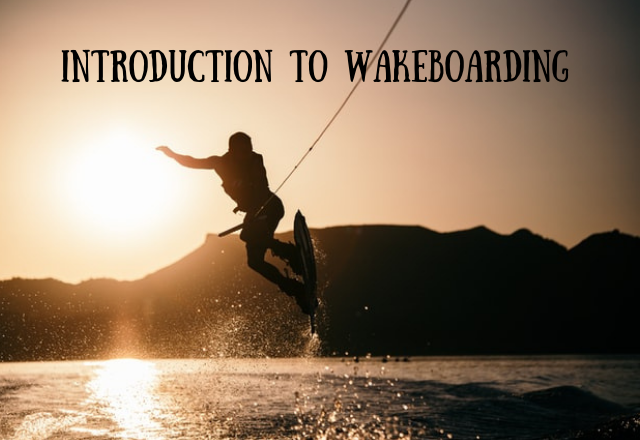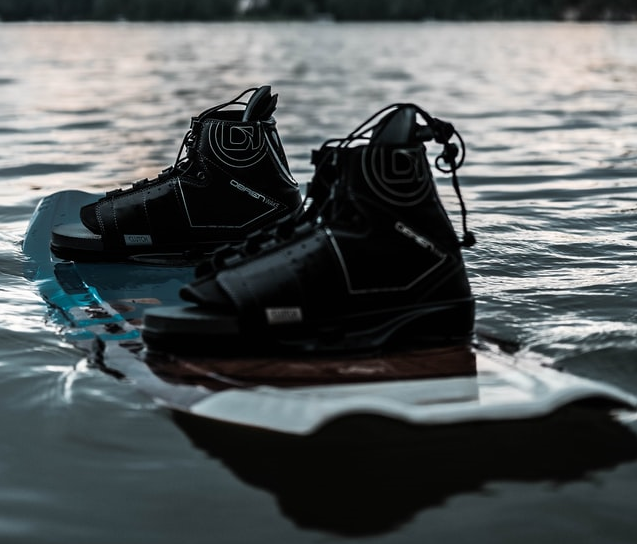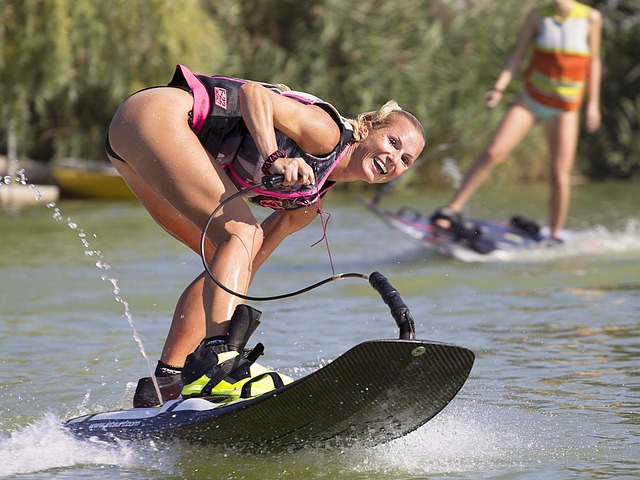Introduction to Wakeboarding

Beginners Guide to the Intensely Enjoyable Sport of Wakeboarding
If you enjoy a sport where the adrenaline levels are always high, wakeboarding should be on your shortlist. Wakeboarding is not only enjoyable, but it is also one of the most addictive sports on the planet. Better still, people of any age can take it up, with the basics easy to master quickly.
This introduction to wakeboarding starts by with a 101, covering what the sports entails. Next, there’s a look at the history of the activity. A quick look at the equipment you’ll need to start you off comes next. Some of the techniques of wakeboarding and the health benefits you will enjoy from taking part in this fun sport can be found at the bottom of this page.
101: What is Wakeboarding?
Wakeboarding has been described as a cross between snowboarding, surfing, and skateboarding. Taking place on the water, at first glance it could be seen as similar to water skiing. You are towed behind a boat in the same way. Once you realise that instead of a ski attached to each foot, both feet are attached to a single board – the differences become clear.
Many of the skills required for wakeboarding are the same as snowboarding. This means that a proficient snowboarder will already have much of the knowhow and technique in place required for this sport.
Beginners can start with simple turns. As you gain experience, you will master tricks and jumps which take your sessions to a brand-new level.
Standing up and enjoying your first session is easy enough for all. Classes are available country-wide to get you started.

History of Wakeboarding
The sport of wakeboarding first started to gain traction in the 1960s. It began as ‘wakesurfing’. Pioneered by surfers who were looking for action when the sea was calm. The original wakesurfing took place on surfboards. Specially adapted ‘skurfboards’ became the next iteration (the name skurfboard came about due to the mixing of the words ‘surf’ and ‘ski’).
Eventually, boards with straps and bindings were sold in Australia, under the name of ‘McSkis’. A water ski manufacturer developed the ‘Hyperlite board’ in 1990 and since then the boards have become more compact and curvier, which creates a smoother ride and meets the demands of the sport.
Wakeboarding Equipment Guide
After you have taken a lesson or two and fallen in love with wakeboarding – the next step is to get your own gear.
Just like in any other sport, you won’t start at the pro-level. A pro-level professional board does not need to be at the top of your shopping list right away.
At the start you want a board that is forgiving for the beginner and can help you learn the tricks. This being the case, beginners should go for the larger size wakeboards with one or more rear fins. These will help with your directional control. As a beginner you are usually given a shorter rope which produces a bigger wake. This might surprise you, but a bigger wake is easier for control when wakeboarding.
Ensure you get yourself an instructor for the early wakeboarding experiences. They will guide you through your stance and your footing and make sure the setup is right for you. This includes the all-important bindings, and an explanation of which angle is the best.
Unless you are sticking to the summer months only, a wet suit will also be needed.

Wakeboarding Techniques
The easiest way for a beginner to get started is to sit back with your knees between your elbows and then give the signal for the driver to start. When your body is out of the water, aim to straighten your legs before moving your leading foot to the front and put most of the weight on the back foot and the fin.
At beginner level, the most important move you’ll want to make is the turn (you can save all of the world class spins until you’ve got to grips with the basics!). To make a turn, you need to concentrate on leaning into your toe edge and heel edge, while at the same time pulling the rope away from the boat. This is all about practise and expect many tumbles at first. Eventually you’ll be doing this fluidly and you’ll feel like a pro.
Health Benefits of Wakeboarding
The overall benefits to your health when wakeboarding come in many forms. Here’s a look at some of the most common benefits:
- Wakeboarding effectively gives you a full body workout. The sport works your core, as well as your arms and legs, with the many different positions ensuring a host of different muscles are worked.
- The sport comes with mental health benefits. Studies have shown that regular outdoor activities can lower the chances of suffering from anxiety and depression. You also have to consider the added vitamin D that comes from activities in the sun.
- Regular wakeboarding can improve both your balance and hand eye coordination. These are both key aspects of the sport and only improve as you start to add tricks into your routine.
- You will also find you have greater flexibility when wakeboarding regularly. In this sport you’ll find yourself in all sorts of positions, only adding to the suppleness and flexibility of your body.
See you on the water!
More Introductions to Popular Outdoor Sports: